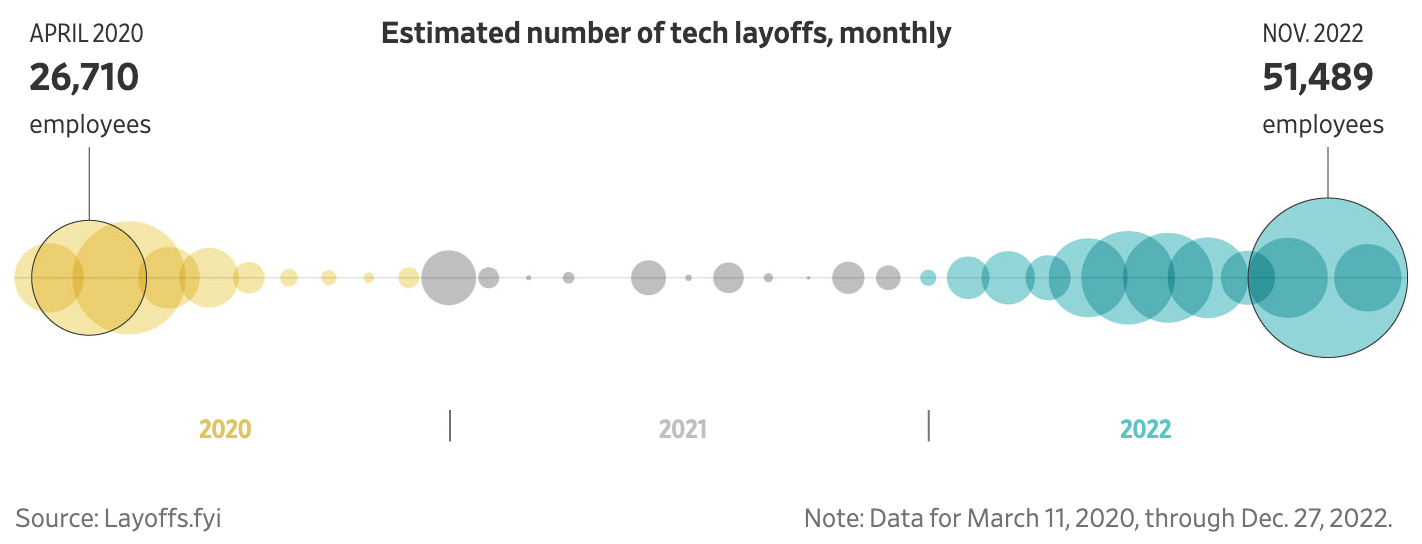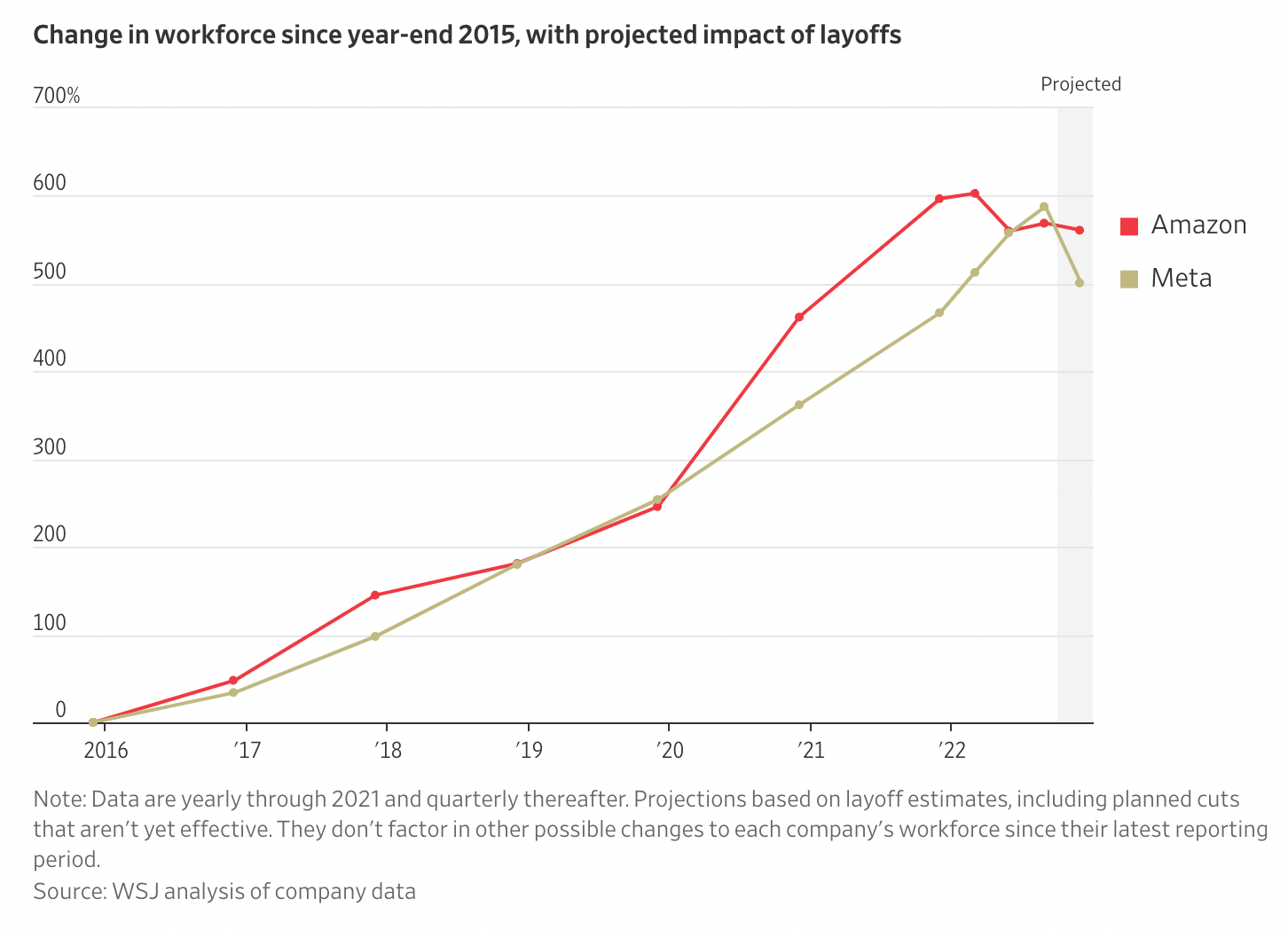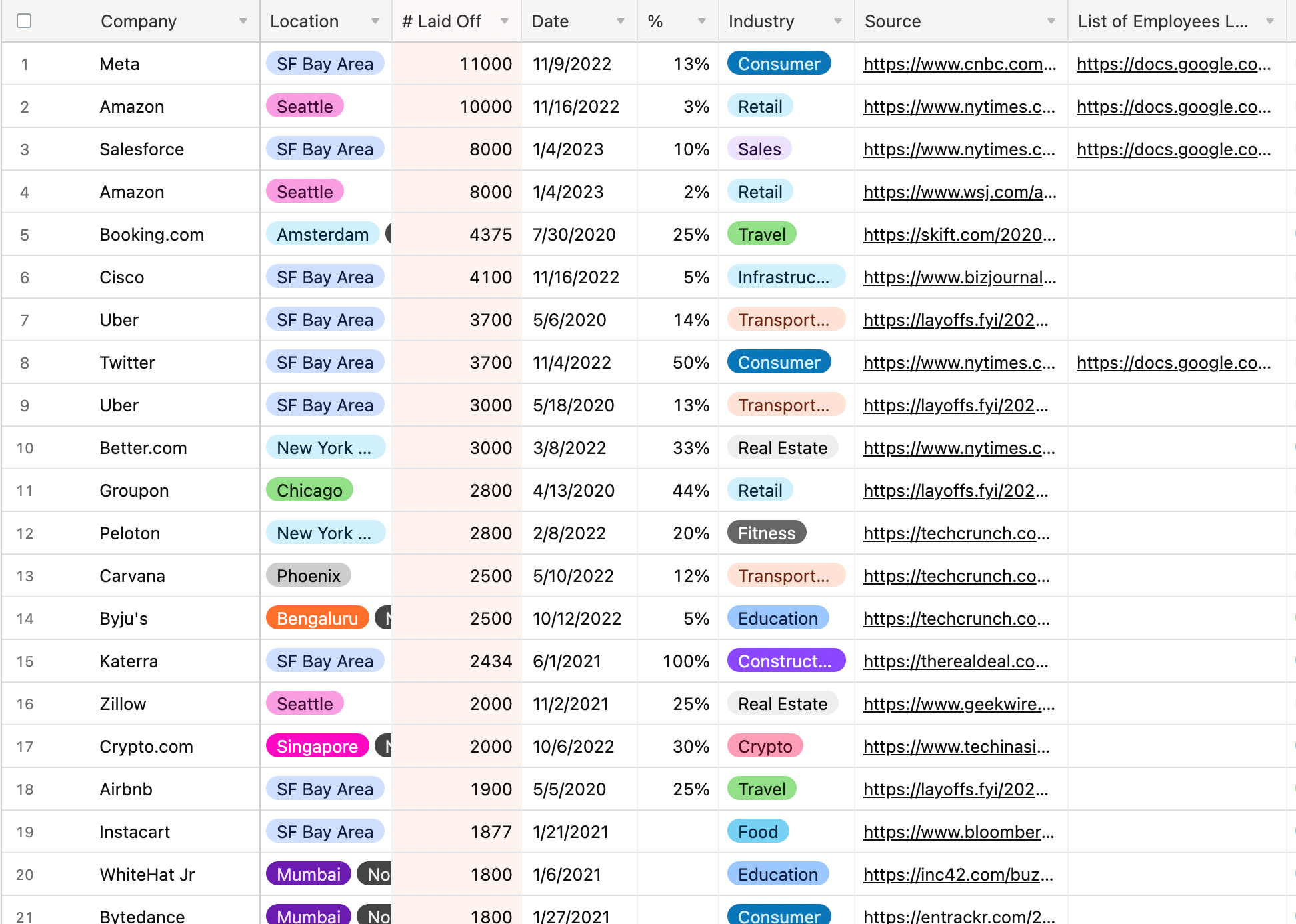Tech Wreck: What's Causing All These Layoffs?

Tech companies have been laying off workers by the thousands over recent months continuing a trend that gained steam last year. And these layoffs are happening faster than they did at any time during the pandemic:

The latest major rounds of layoffs include Amazon and Salesforce which announced on January 4th that they will layoff 8,000 workers each. Then Coinbase announcing January 10th that it will cut 950 workers. According to a report from Stanford University, it is estimated that in 2022 alone, over 120,000 people were dismissed from their jobs at some of the biggest and hottest tech companies.
According to Ruul, the three most affected departments during the recent tech layoffs are Marketing, Sales, and HR/Recruiting. These roles are often considered more expendable in times of crisis, as they are non-technical in nature.
Hiring in the tech sector soared in recent years, intensifying during the pandemic, as companies quickly added jobs:

The layoffs, concentrated primarily in the tech sector, have been spiking in recent months. According to Layoffs.fyi, a website that tracks layoffs in the tech industry, the number of layoffs in November was three times that of October. Since the start of 2022, more workers in tech have been laid off than in 2020 and 2021 combined. Layoffs.fyi's site shows a total over 150,000 laid off in 2022, and over 20,000 tech layoffs in 2023 so far.

The reasons for these layoffs are multifaceted, but there are a few key factors that have contributed to the recent trend. Let's take a look.
According to Nerd Wallet, there are a lot more people working in tech today than in 2020 or 2021, and this excess of employees is one of the reasons why there has been an increase in tech layoffs. From late 2020 through early 2021, many tech companies went on a hiring spree, despite the uncertainty caused by the pandemic. This was in part due to the low-interest rate environment that made it relatively cheap for companies to borrow money and make investments.
However, this over-hiring has led to an oversupply of employees in the tech sector, and with recent rising interest rates and economic tightening, the end of free money essentially, many companies have been forced to cut costs by laying off workers. The low-interest rate environment also led to much hype in the stock market and more funding in the start-ups hence leading to sometimes severe overvaluation of tech companies, many of which were seeing a loss of revenue and growth, which in turn has forced them to take measures like laying off employees.
Another factor that contributed to these recent layoffs is the economic impact of the COVID-19 pandemic. Many tech companies have been forced to cut costs in order to stay afloat during the economic downturn, and layoffs have been one of the ways in which they have done so. Additionally, the ongoing shift towards remote work has also affected the tech industry, with some companies opting to reduce their physical office space and subsequently the number of employees they need to support.
The effect of the recent tech company layoffs is being felt across the industry. According to Forbes, the hiring landscape in the tech industry will continue to shift as a result of these layoffs. For the last decade, tech talent held a lot of bargaining power in the hiring process, with candidates receiving multiple job offers simultaneously. However, with a surplus of unemployed tech workers, this dynamic is likely to change, with more competition among job seekers and less power for employees to negotiate salaries and benefits.
In conclusion, the recent tech company layoffs are a result of a combination of factors, including the non-technical nature of some roles, the economic impact of the COVID-19 pandemic, the shift towards remote work, and the oversupply of employees in the tech industry as a result of hiring sprees during the pandemic. Low-interest rates made it rather cheap for companies to borrow money and make investments, leading to an increase in hiring despite the uncertain economic climate. This surplus of unemployed tech workers will likely change the dynamic of the hiring process and have an effect on the hiring landscape of the tech industry moving forward. However, it is important to note that the specifics of the layoffs can vary from company to company, and it is important to look into individual cases to understand the context and reasoning behind them.




Comments ()